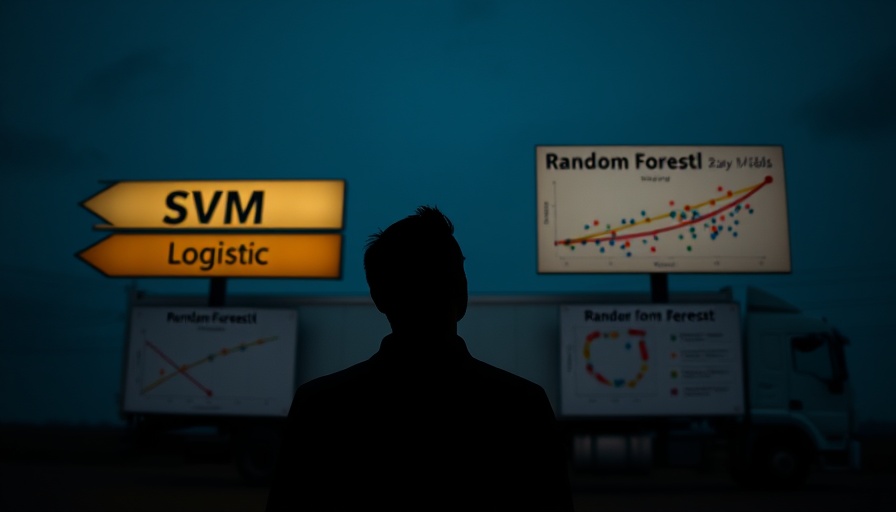
The Importance of Choosing the Right Model
When working with small datasets, making the right choice between machine learning models is vital. For entrepreneurs striving to harness artificial intelligence to elevate their businesses, understanding the nuances of Logistic Regression, Support Vector Machines (SVM), and Random Forest can significantly impact outcomes.
Understanding Small Datasets: Challenges Ahead
While the tech world often celebrates the power of big data, many entrepreneurs face the reality of operating with limited information. Overfitting is a common issue, where the model memorizes the small dataset instead of learning from it. The balance between underfitting and overfitting becomes a tightrope walk, often making the task overwhelming for those without extensive data science backgrounds.
Logistic Regression: The First Contender
Logistic regression is often favored for its simplicity and interpretability. This linear model makes probabilistic predictions easily understandable, crucial when conveying results to stakeholders. It thrives in scenarios where the relationship between input features and outcomes is nearly linear.
However, for entrepreneurs with complex datasets involving numerous interacting features, logistic regression may fall short. Its limitations in handling non-linear boundaries can be a deciding factor.
Support Vector Machines: Finding Hyperplanes
On the flip side, Support Vector Machines are known for their capacity to handle complex datasets through the kernel trick. By projecting data into higher dimensions, SVMs can identify non-linear decision boundaries that may be vital for success in fields like digital marketing.
For budding entrepreneurs, utilizing SVMs can provide a competitive edge in predictive modeling, but the method requires careful tuning and significant computational power, making it less accessible for those just starting with AI.
Random Forests: Flexibility Meets Power
Random Forest algorithms stand out when handling complex datasets by averaging results from multiple decision trees. The strength of this method lies in its ability to manage various patterns within data, providing robustness that entrepreneurs need. This ensemble approach combines the predictability of individual models with improved generalization.
Despite its strengths, Random Forests may demand more computational resources, something smaller enterprises may not afford. Therefore, understanding these trade-offs is essential for small business owners seeking the best model.
The Best Model? It Depends on You!
The quest for the best model among Logistic Regression, SVMs, and Random Forests cannot be answered definitively without considering each enterprise's unique data characteristics and objectives. As technology evolves, integrating AI into operations becomes easier and more accessible, particularly with tools designed specifically for beginners and small businesses.
For entrepreneurs interested in leveraging AI, starting with tools that simplify complex algorithms can pave the way for smarter decision-making without overwhelming learning curves. This move not only saves time but also empowers individuals with actionable insights that can fuel growth.
Explore More: Automation with AI Tools
Ready to elevate your entrepreneurial endeavors? Explore the best AI tools for entrepreneurs today and learn how you can automate your hustle to save time—allowing you to focus on what truly matters. Embrace the future of AI and creativity, ensuring your business thrives in a competitive landscape.
 Add Row
Add Row  Add
Add 




Write A Comment